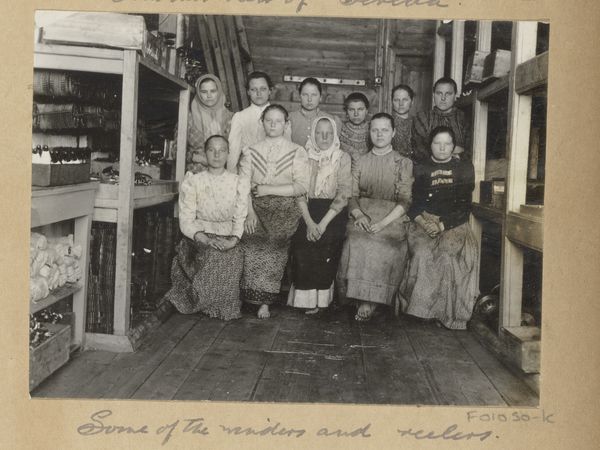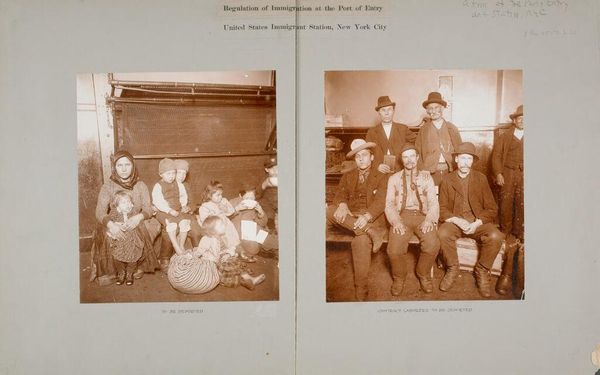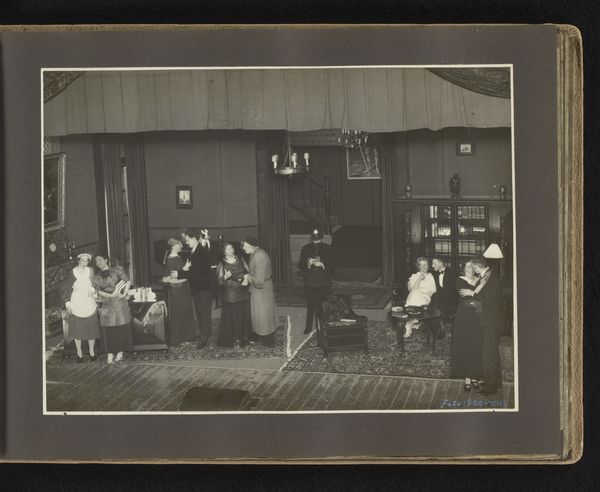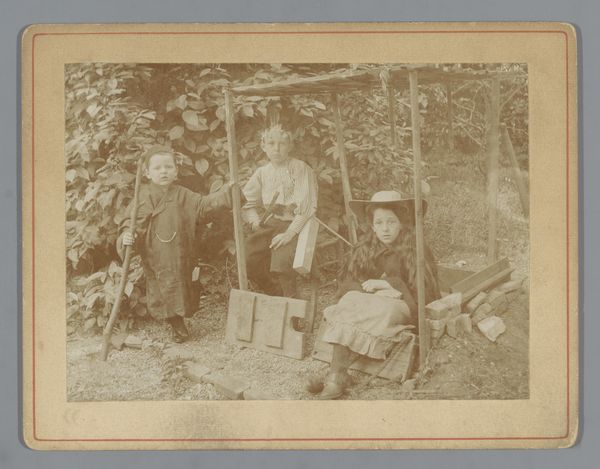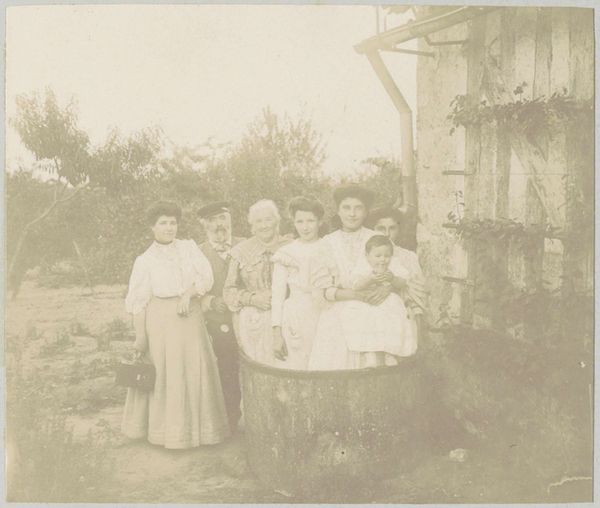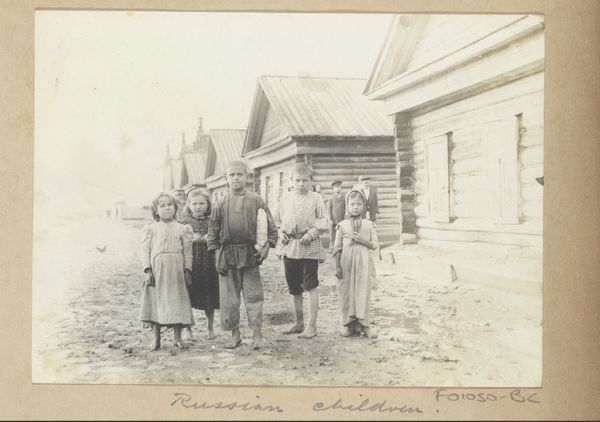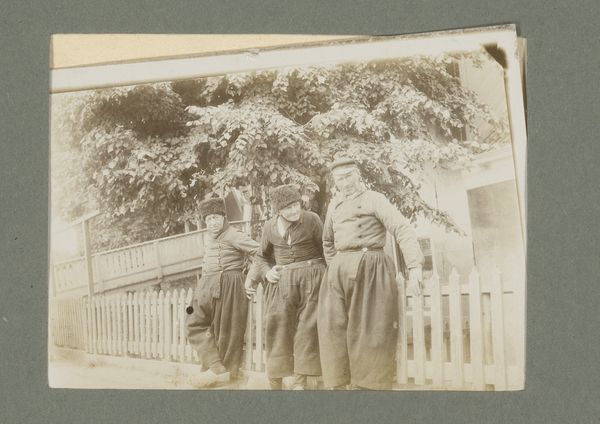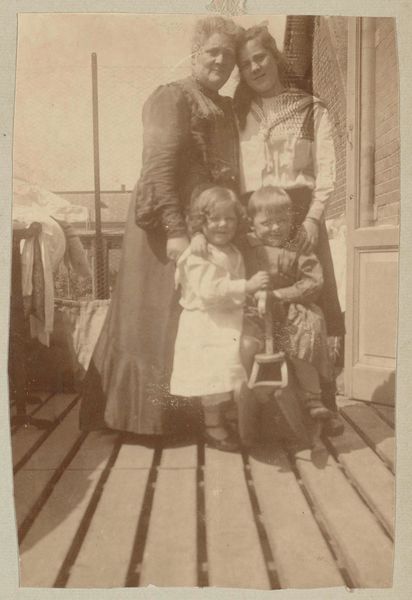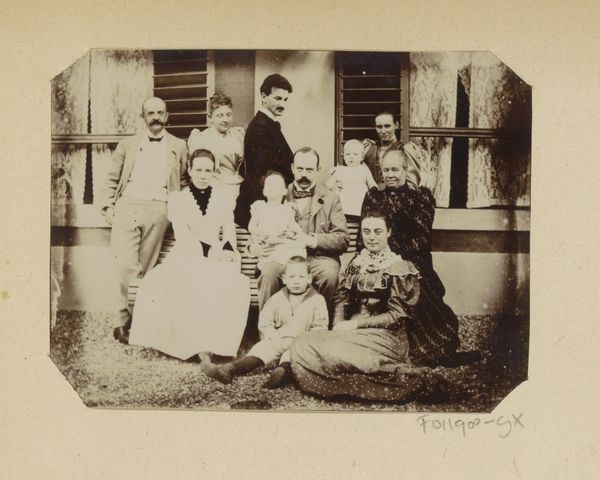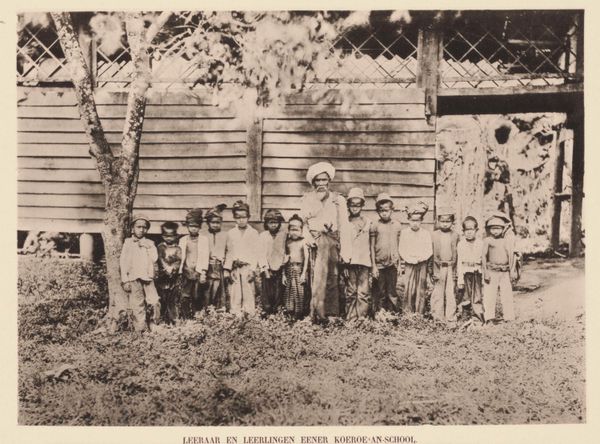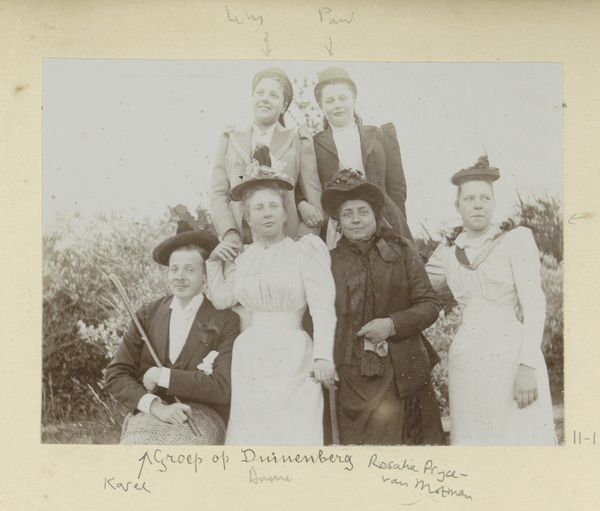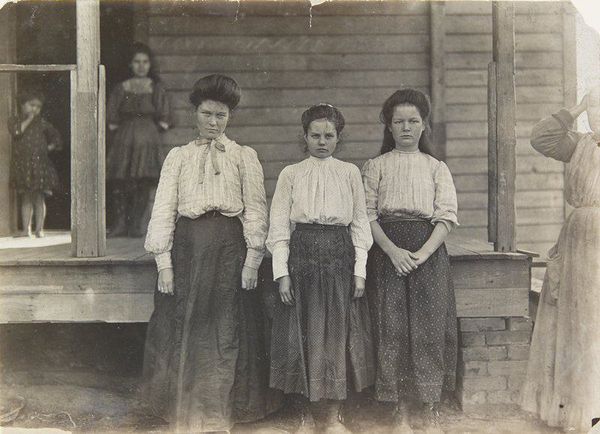
photography, gelatin-silver-print
#
portrait
#
photography
#
gelatin-silver-print
#
russian-avant-garde
#
genre-painting
#
realism
Dimensions: height 80 mm, width 108 mm
Copyright: Rijks Museum: Open Domain
Curator: This gelatin-silver print, titled "Fabrieksarbeidsters met emmers te Sereda in Rusland," which translates to "Factory workers with buckets in Sereda, Russia" was captured by Joseph Cheetham between 1903 and 1904. It now resides here at the Rijksmuseum. What’s your initial impression? Editor: The monochrome tones give it an immediate solemn feel. And the textures, from the women's garments to the raw interior, speak to the practicalities and labor involved. You can almost feel the weight of those buckets, and the cold of the factory environment. Curator: It’s an arresting image, indeed. Cheetham's lens captures these workers—likely on the lower rungs of the industrial ladder—with remarkable realism. Consider the context: Russia, on the cusp of revolution, grappling with rapid industrialization and its human cost. This image functions as social commentary and aligns somewhat with the Russian avant-garde’s concern with representing everyday life. Editor: Exactly. The buckets they carry aren't just props, but tools representing their social function, their material reality. We see here the tangible outcomes of industrial growth concentrated on the bodies of women performing maintenance labor. It challenges any romantic vision of progress and presents an almost brutal portrayal of their role. Curator: Yes, their labor is quite central. It brings into question the distribution of roles and privileges. And although their expressions are mostly unreadable, there's an undeniable sense of stoicism, perhaps even weariness, reflecting a much wider narrative of working-class conditions at that time. Editor: I am interested in the stark contrast of materials too. Note the bare feet, the simple fabrics, the metallic sheen of the buckets themselves against the likely dirt floor. Those material combinations highlight the unadorned existence and underscore that relationship to labor, the women, the factory itself as a producer. Curator: The work evokes critical questions about Russia at the turn of the century, inviting us to reflect on the socio-political tensions woven into this seemingly straightforward depiction. Editor: It's powerful because of how directly it presents a snapshot of a reality constructed on labor. It causes one to pause and contemplate the complex interplay of people, objects and the systems that contain them.
Comments
No comments
Be the first to comment and join the conversation on the ultimate creative platform.
